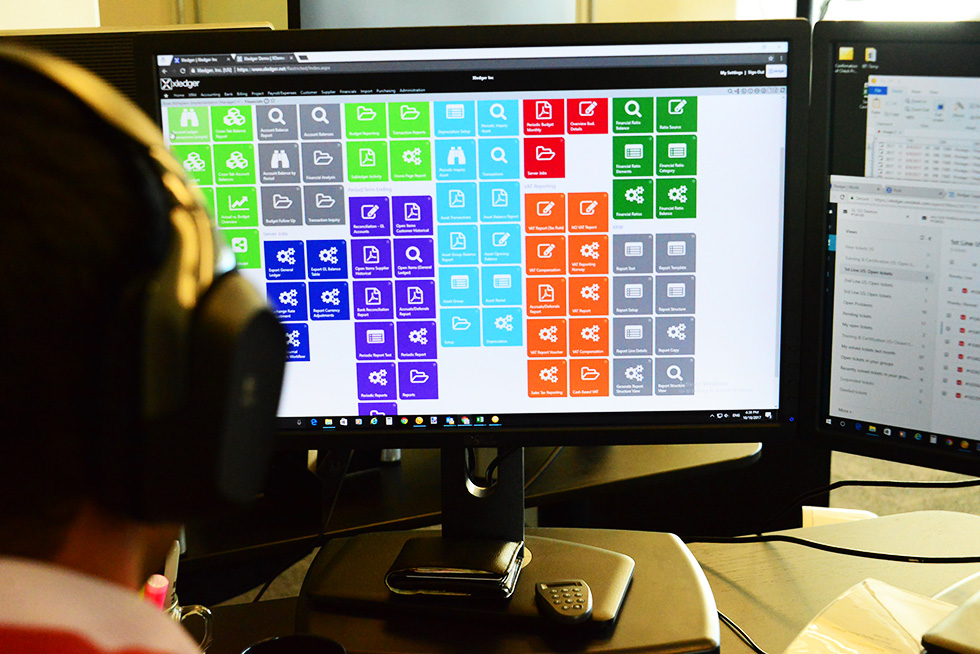Xledger’s Geir Tonnessen sat down with Jeff Pospisil, treasurer of the Dakota Conference of Methodist churches and financial overseer for 240 churches, to discuss the state of stewardship in the nonprofit world and how Xledger has impacted his own stewardship.
Thanks so much for taking the time to do this, Jeff.
It’s my pleasure. Glad to be here.
Stewardship is a hot topic for nonprofits today. Some define it as managing gifts, others as managing donors. How would you define stewardship?
When I see stewardship, I see it as using resources—whether people, finances or time—in a way that is honoring to God. If I have to account to God, I want Him to be pleased with how I managed what He gave me. On a more general level, I would say that, for non-profits, stewardship is using your resources in a way that you would be proud to share with your donors–that would cause them to say “good and well done.” I think it means getting the most out of the resources you have. It’s efficiency, in other words.
So do you believe that stewardship is undervalued?
I don’t know if it’s undervalued, but it’s often not considered. Sometimes it takes a back burner to all the other things that you have to get done. There are some things that are important but not urgent, and I think stewardship is one of those. If you don’t focus on it and start planting the seeds, it’s hard to continuously improve the way you do things.

Any thoughts about how technology can help non-profits?
I love the efficiency that technology like Xledger can provide. There is always more work out there to do. You will never ‘work yourself out of work’ by being more efficient. You will just find better things to put your time into.
I cannot stress enough how a solution like Xledger can help bring more people into accounting, which brings more accountability in the whole system and more trust there. The more people can see, the more transparent you are, and the more involved, the more buy-in and trust we’re seeing. That has been very important for us.
What system did you use before, and why did you start looking for a new solution?
We used Great Plains on a hosted server for many years. Then there was a shift 5 years ago and we had camps included in accounting. We faced multiple problems with having a hosted server, including logging in from different locations. All of this led us to conclude that if we wanted to have people able to log in and work while they were traveling, we needed a cloud based solution. Also we were not happy with the reporting, which was inflexible with regard to what we wanted to do.
You will never ‘work yourself out of work’ by being more efficient. You will just find better things to put your time into.
In what way did Xledger stand out to you, compared to other system you had seen?
We liked Xledger’s all-in-one solution. If we went with Intacct, another solution we were considering, we would get financing, but we’d have to buy additional applications for payroll and extra reporting. We would then have to deal with additional integrations, and the risk that somebody else’s integration would break. We liked that we didn’t need several other contracts if we went with Xledger.
We also liked that Xledger was from the beginning a cloud based solution. It was not somebody dipping their foot into it, or trying to figure how cloud based works. It was reassuring that Xledger had been 15 years in the cloud based accounting world. We wanted to get the best experience that we could for our users.

How did you experience the change to Xledger?
It was a big adjustment to change to Xledger from the previous system. It was almost like speaking another language. We moved from a server based machine, and had to rethink a lot of our processes. It was a huge thing for us even to have workflow and to see the actual invoices. It also helped improve accountability. I didn’t know that we had it where some people would charge to other people’s budgets. Now with workflow we can actually say no. And these were actually very healthy conversations for us to have.
What aspects of Xledger do you find the most helpful?
I love all the automation. Someone enters a voucher, and the information automatically populates in the system. We just finish it up, and someone else remotely approves it from Mitchell or Minnesota.
Also, being able to enter a batch of checks with the GL makes it nice and easy for someone doing large batches. In July I had to enter in 200 checks, which would normally take us a good day’s work. But we were able to verify and set up the spreadsheet beforehand. It only took me an hour to finish it, and once I uploaded it, I was done. It saved us three quarters of a day of work. And in that three quarters’ day, we took care of one year of work in one spreadsheet upload. That’s amazing!
What was your experience with the implementation process?
The implementation team did well and the Xledger Implementation Methodology (XIM) kept us on track.

Lastly, do you have any advice for others that would like to practice stewardship?
First of all you’ve got to live it! In my own life I try to prioritize family, time, and not wasting money. Because stewardship isn’t urgent, you actually have to put it on the schedule. In my organization we do retreats now, and there we can talk about how we are going to improve. We try to teach it and preach it quite often. You have to set aside time and discuss what stewardship looks like. Where does your organization have the opportunity to grow?
Thanks again for your time, Jeff. We really appreciate your insight.

